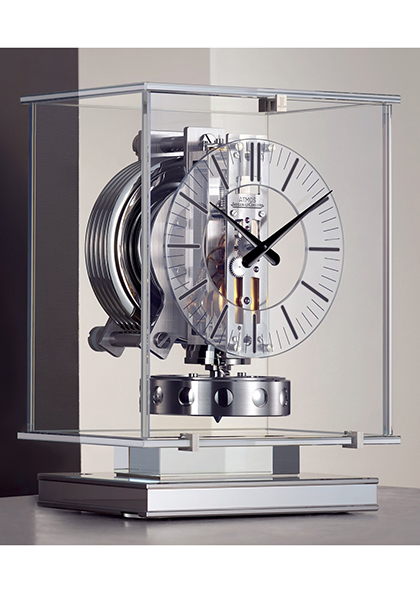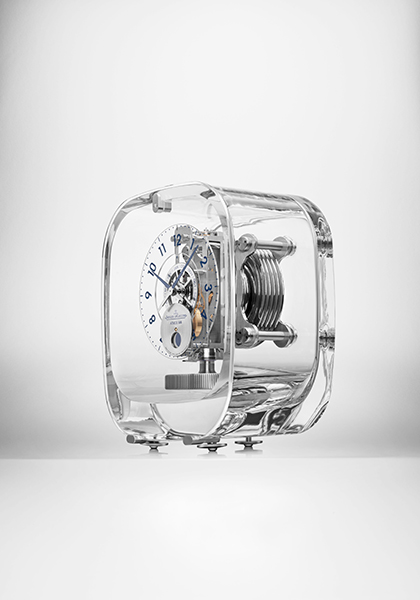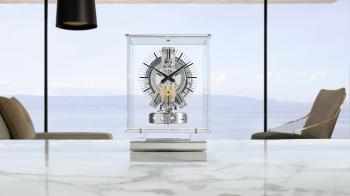My team members enjoy making fun of my extreme intolerance to changes in the weather. Anytime the temperature dips below 25 degrees, you can be sure that this watch writer is not having a good time. Being generally quite small in stature, my outer extremities get cold fast, and I’m also particularly susceptible to getting a nasty static shock whenever I touch metallic objects in the winter. During the colder months, the office is filled alternately with piercing complaints about how I can’t type properly with cold hands, reverberating with enraged shrieks as static electricity courses through the nerve endings in my fingers, or loud thuds as I tend to boot doors open instead of touching the door handles with my hands. If you think my team should be canonised for cheerfully working through all this, you are right and you should send them chocolate (which I promise I will not steal and eat).
I was not built for extreme temperature fluctuations. However (I hope you realise this was leading somewhere and not just some kind of editorial jeremiad against Swiss weather), some things are. Some things, in fact, thrive and flourish on extreme temperature fluctuations. I am speaking, of course, of the famed Jaeger-LeCoultre Atmos, the clock that reputedly lives on air. It doesn’t live on air, obviously. It’s powered by changes in temperature and atmospheric pressure.

This stems from the fact that both temperature and atmospheric pressure can affect states of matter. We all know (at least, I hope we all know) that matter transitions from solid to liquid to gaseous form as the temperature increases. Fewer people are aware that melting and boiling points can change at different levels of atmospheric pressure. The temperature at which water boils, for example, decreases as the altitude increases. If you tried to brew a cup of tea at the summit of Mt Everest, the tea wouldn’t be very good. As ridiculous as it might sounds, the boiling water just wouldn’t be hot enough. Go high up enough, around 45,000ft, and you could quite comfortably stick your hand into a pot of furiously bubbling water — although I don’t necessarily advise you to try this.
Instead, turn your attention to the Jaeger-LeCoultre Atmos. The Atmos is not just an example of how boiling points can be manipulated just by pressurising matter, it is also a brilliant practical application of this phenomenon. In addition, it is incredibly energy efficient. So sensitive is the clock mechanism that one degree of temperature fluctuation is enough to power the Atmos for 48 hours.
Now, the key to the Atmos clock’s apparently physics-defying operation lies in the principle we examined earlier. Behind the movement of every single Atmos clock produced between the late 1930s and the present day is a hermetically sealed capsule of pressurised ethyl chloride. Ethyl chloride is a chemical used for its numbing properties in dentistry, it is a thickening agent used in paint, athletes use it in spray form to soothe aching muscles, kids inhale it in clubs to get high. Most importantly for the purposes of the Atmos clock, ethyl chloride is highly reactive to changes in temperature and atmospheric pressure, and it has a sea-level boiling point of 12.3°C.

At room temperature, ethyl chloride would be a gas, floating around your head, smelling faintly sweet and inducing fits of dizzy giggles. When pressurised and sealed in an airtight capsule, as it is in the Atmos, ethyl chloride exists as a liquid, even at temperatures well above its sea-level boiling point. In response to tiny changes in atmospheric pressure or temperature, the pressurised ethyl chloride is alternately vaporised or condensed, pushing or pulling upon a flexible membrane that makes up the active surface of the capsule. This membrane is coupled to a ratchet-and-pawl system, and as the ethyl chloride vaporises (expands) or condenses (contracts), the rise and fall of the membrane surface engages the ratchet wheel, moving a series of intermediate wheels that ultimately winds the mainspring.
The movement is calibrated to superfine levels of sensitivity — remember that 48 hours of power reserve is derived from a single degree of temperature fluctuation. Consider all this in context of an oscillator that only completes a single full oscillation once a minute (30s for each semi-oscillation), and you start to understand the exquisite delicacy of an Atmos clock movement. This is why it’s usually not considered very wise to move an Atmos clock after it’s been placed in a particular location. In this regard, I have to say that the Atmos and I share a common point. Especially during the winter months, it is extremely unwise to move me from my fixed location, and you won’t be surprised to learn that the location in question is: right next to a heater set to full blast.





